Nestled on the northwest coast of Peninsular Malaysia, Penang beckons with its irresistible mix of history, culture, and cuisine. Though two days may only offer a glimpse of this captivating island, you can embark on a whirlwind tour that covers the must-see highlights. I came here as a weekend trip from Singapore given its proximity and I think that is enough time to see the highlights of Penang.
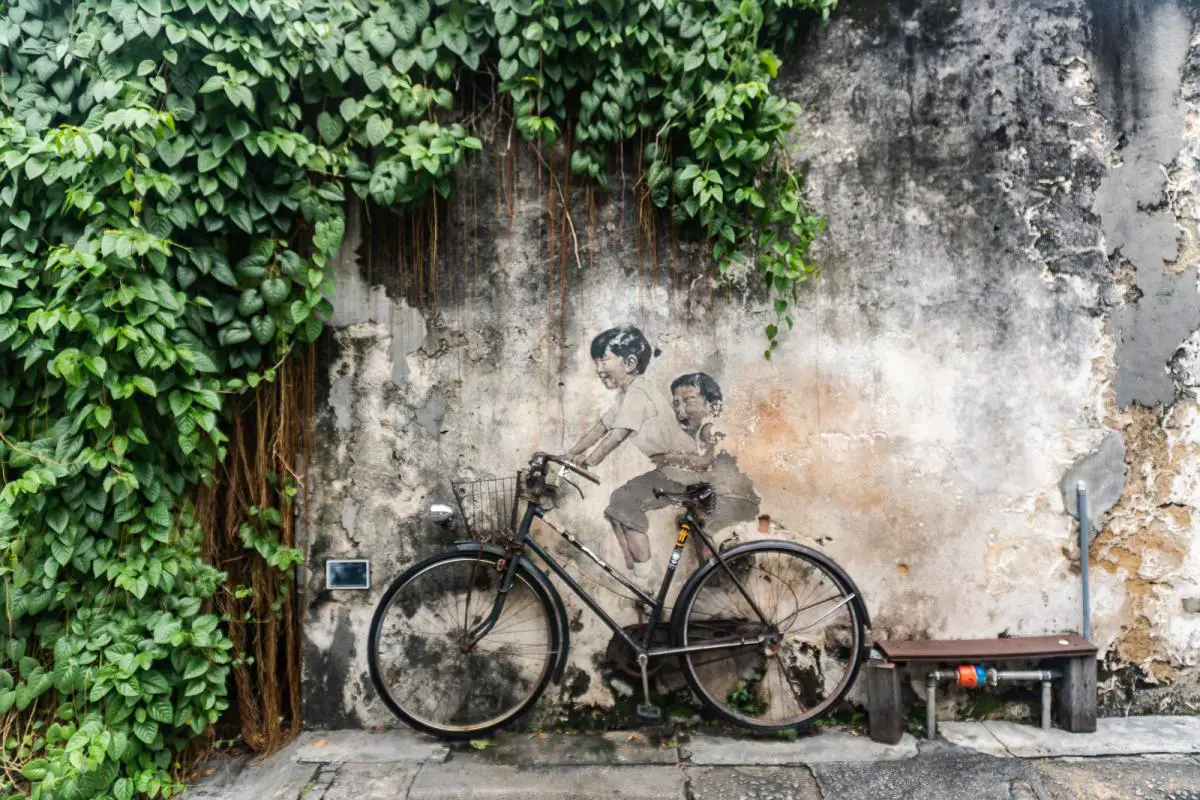
There really isn’t that much to see in this colonial town of Malaysia. The shophouses in the city center are very picturesque but there simply isn’t as many traditional sights in and near Penang as say somewhere like Chiang Mai or even a place like Yogyakarta which has the famous Borobudur temple.
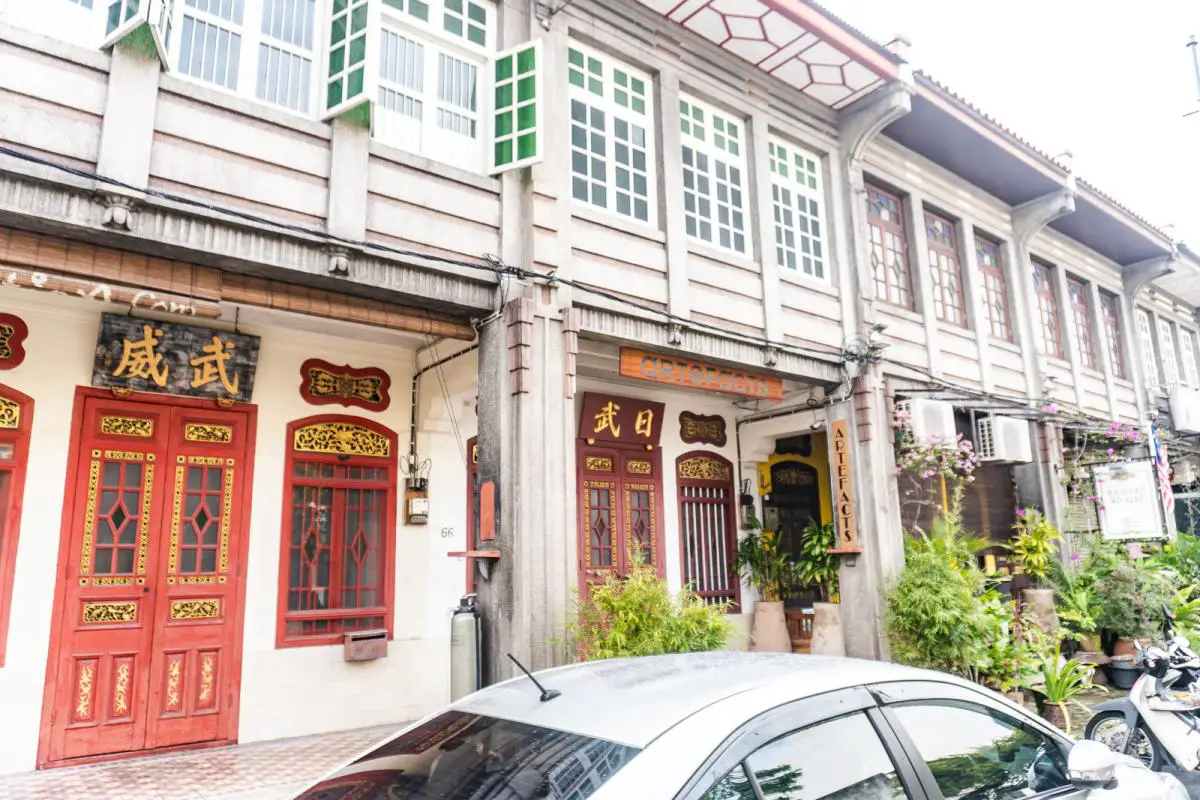
With that said, what Penang does excel at is amazing food for very affordable prices. If you’re into street food culture and like the tastes of Chinese-Malay cooking, then Penang is the spot for you. I more or less spent the entire two days eating from place to place trying out the local foods. Hopefully you’ll be into that too as much of this post will be focused on the food!
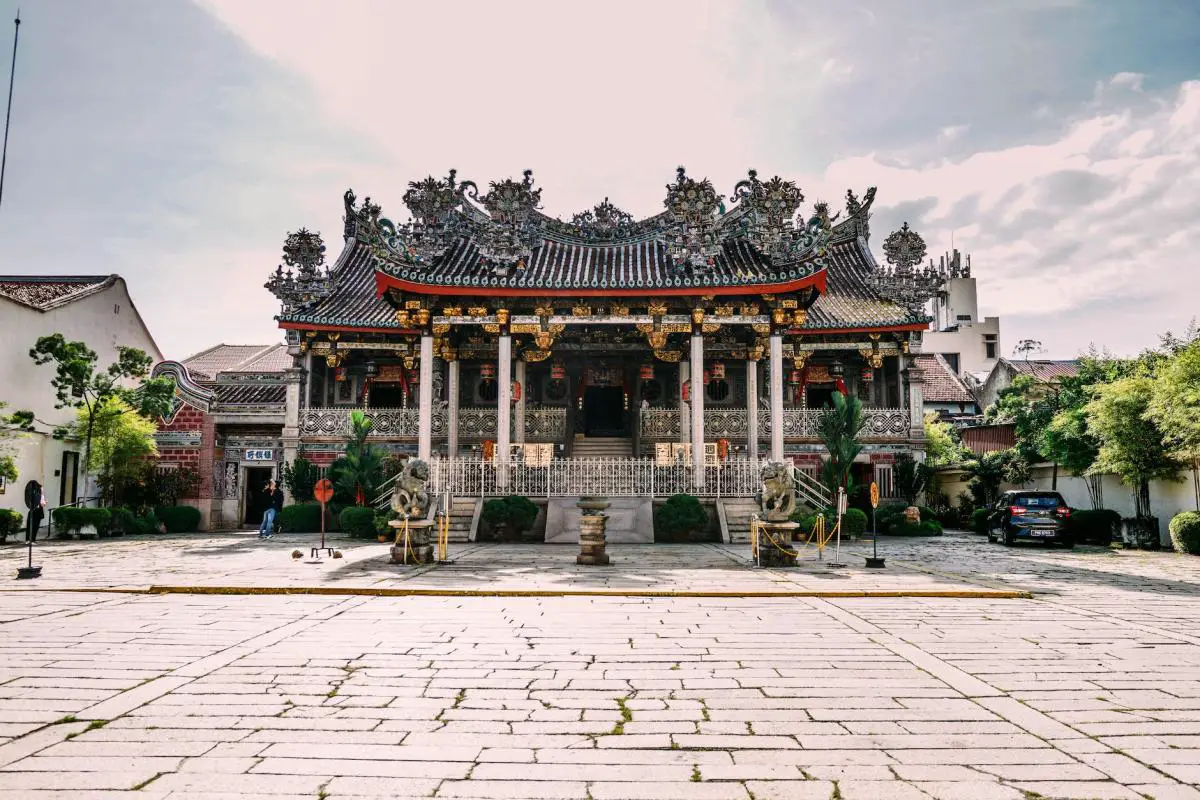
Where to stay in Penang
Penang is actually quite a big city and Penang proper is not the Penang you want to stay at. For all tourists, you’ll want to stay in George Town which is the colonial center with a proper old town that offers you all the sights, sounds, and smells of your dreams. Penang is vastly different from other parts of Malaysia like the Sabah province where I dived the Sipadan reef.
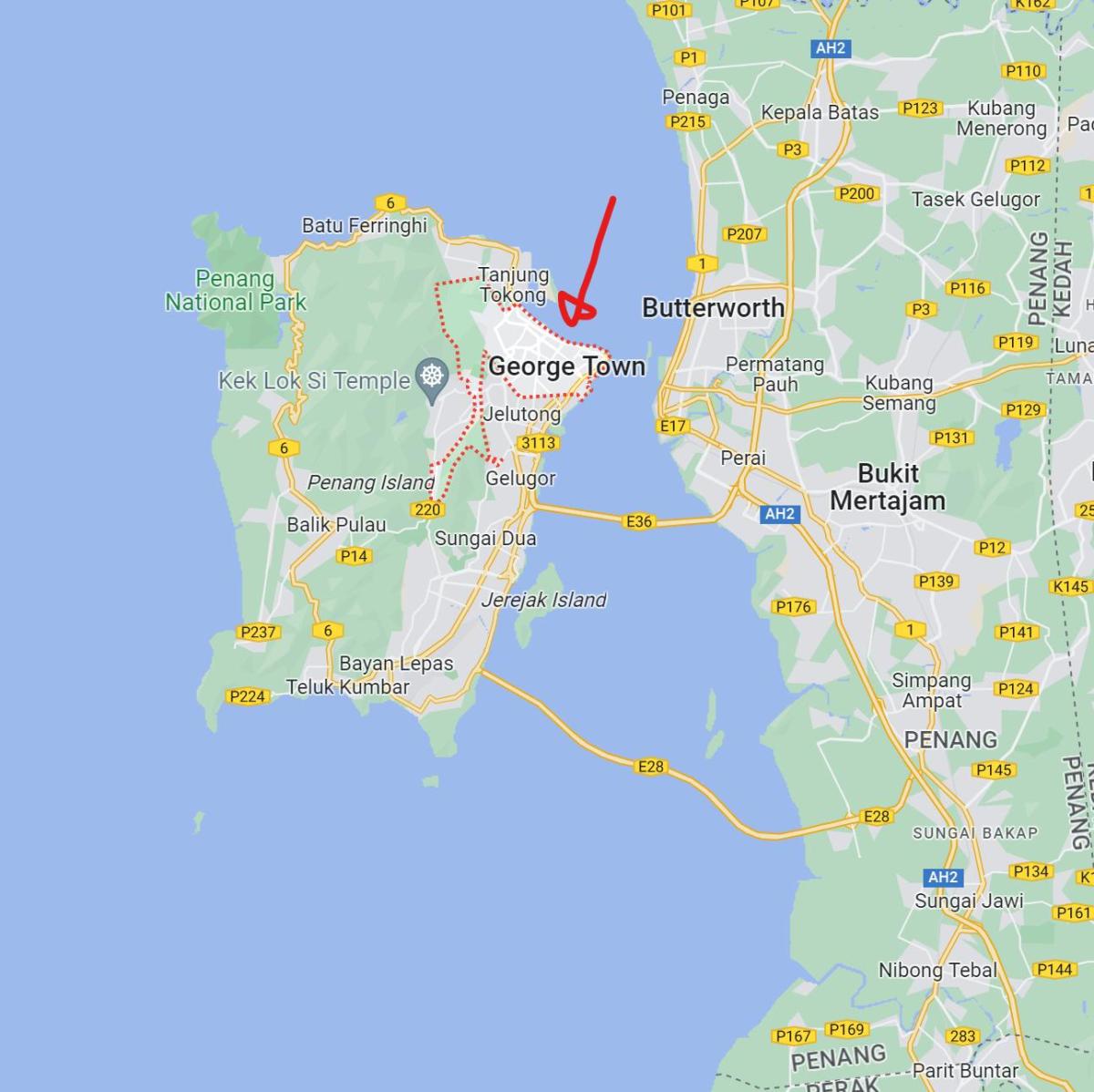
There are plenty of accommodations in Penang that fits all budgets. I stayed in a great hotel in the city center for about $50 a night that was within walking distance to everything.

Middle End – $50 to $100
High End – $100+
Penang is a food lovers paradise
Here are some of the top dishes and food items you must try when visiting Penang:
Penang is a food lover’s paradise, renowned for its diverse and flavorful cuisine. I spent most of my entire two days eating my way through the city trying as many things as possible. The food in Penang is quite similar to the food in Singapore. You’ll find much of the same items here as you would ifnd a a hawker market in Singapore. Nevertheless, the flavors in Malaysia are just a bit stronger and somehow tastier. Even the Singaporeans agree and many of them come to Penang to chow down.
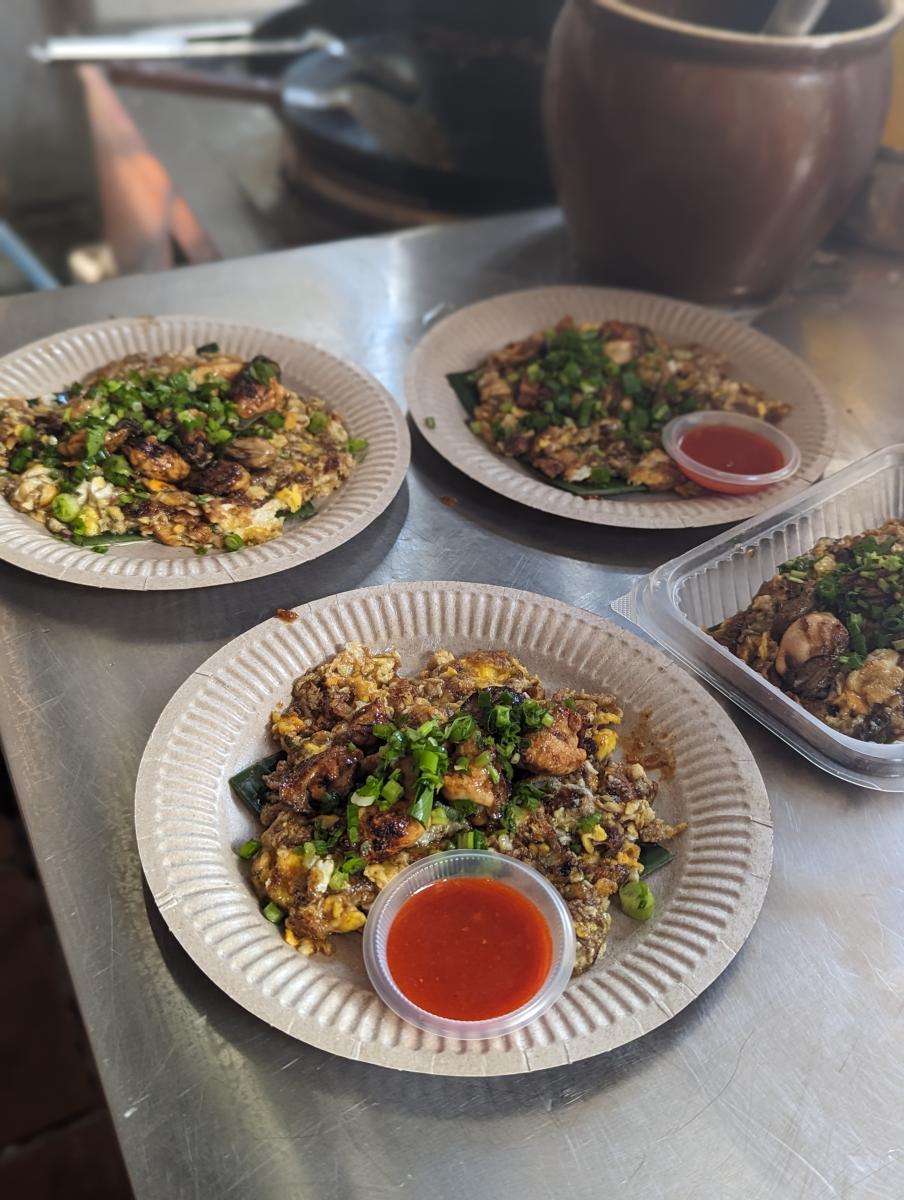
- Char Kway Teow: A stir-fried noodle dish made with flat rice noodles, prawns, Chinese sausage, egg, and bean sprouts, all tossed in a savory soy sauce. It’s often cooked with chili paste for an extra kick.
- Laksa: Penang is famous for two types of laksa: Asam Laksa (a sour fish-based soup with tamarind) and Curry Laksa (a coconut milk-based curry soup). Both are delicious and offer a unique combination of flavors.
- Hainanese Chicken Rice: Tender poached chicken served with fragrant rice, accompanied by chili sauce and ginger paste. This dish is simple but incredibly satisfying.
- Rojak: A flavorful fruit and vegetable salad with a sweet and tangy shrimp paste sauce. It’s a delightful mix of textures and flavors.
- Nasi Kandar: A hearty meal of steamed rice accompanied by a variety of curries, meats, and vegetables. It’s often served with a generous ladle of flavorful sauces.
- Mee Goreng: A spicy fried noodle dish typically made with prawns, tofu, and a variety of vegetables. The key is the flavorful sauce that coats the noodles.
- Penang Hokkien Mee: A fragrant and savory noodle soup with prawns and slices of pork. The broth is simmered for hours to achieve its rich flavor.
- Satay: Skewered and grilled meat, often served with a delicious peanut sauce and accompanied by rice cakes and cucumber.
- Pasembur: A Penang-style salad featuring a mixture of seafood, vegetables, and prawn fritters, all drizzled with a spicy peanut sauce.
- Apom Manis: Thin, crispy pancakes with a sweet center, often made with coconut milk and sugar. They are a popular street food snack.
- Cendol: A sweet and refreshing dessert made with green rice flour jelly, coconut milk, palm sugar syrup, and crushed ice. It’s especially delightful on a hot day.
- Ais Kacang: A colorful dessert with shaved ice, sweet syrups, and an array of toppings like red beans, corn, agar-agar jelly, and more.
- Otak-Otak: A spicy fish cake wrapped in banana leaves and grilled or steamed. It’s a flavorful and aromatic snack or side dish.
- Lor Bak: Deep-fried pork rolls or prawn fritters served with a dipping sauce. The combination of crispy exterior and tender interior is delightful.
- Murtabak: A stuffed pancake filled with a mixture of minced meat, onions, and spices. It’s a flavorful and filling dish.
- Roti Canai: Flaky and crispy flatbreads served with dhal (lentil curry) or other curries. They can be enjoyed plain or filled with various ingredients like egg or cheese.
- Prawn Mee: A flavorful noodle soup made with a prawn-based broth, prawns, and bean sprouts. It can be spicy and is a favorite among locals.
Day 1 of Penang
I arrived at night just in time for dinner. The Grab from the airport to George Town is about 30 minutes and will cost you roughly 20 MYR (~4.50 USD). As soon as I checked into the hotel, it was off to the races to find the best food in Penang.
7:30pm – Teksen Restaurant
The first stop on the list is at the famous Teksen restaurant in the city center. Teksen has been around since 1965 and has been the go to no-frills eatery for generations of foodies and locals alike. Teksen serves traditional cantonese fare in a laid back and casual setting. The food here is delicious, fresh, and affordable.
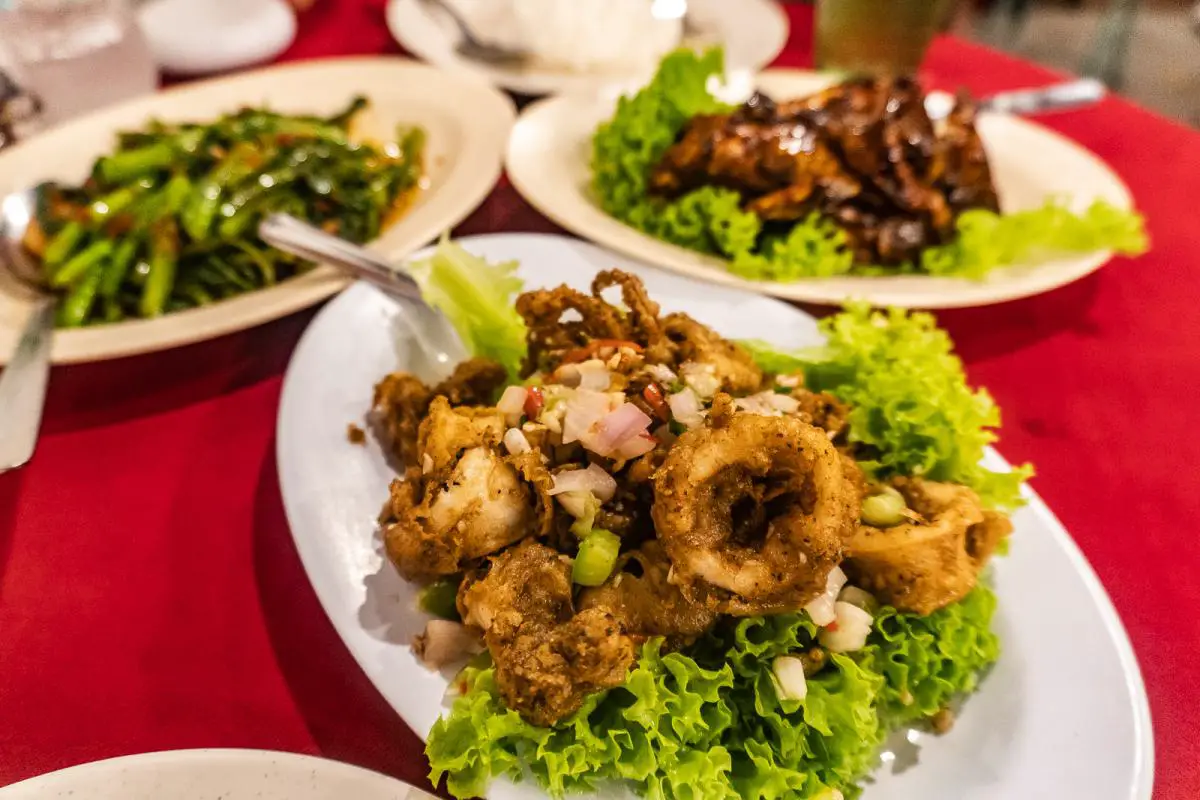
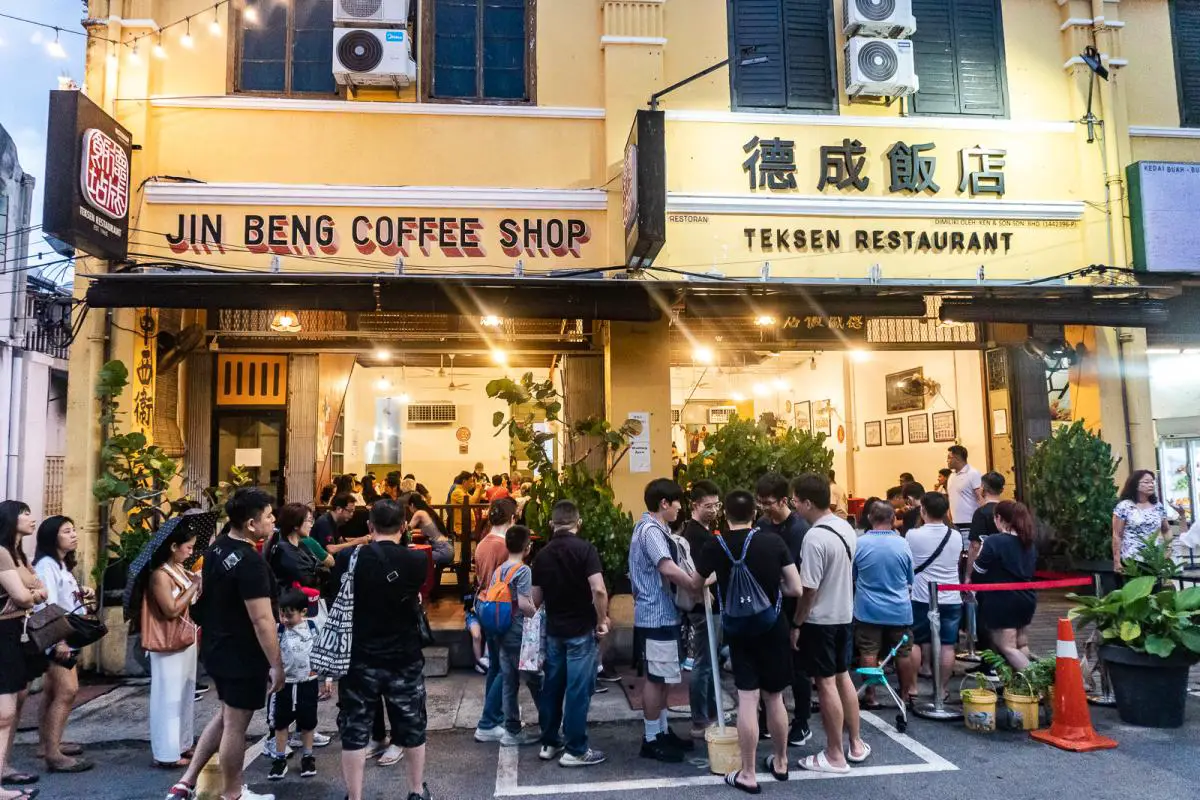
I had their sambal kangkong, salt and pepper squid, and tamarind prawns. Their pork dishes looked amazing as well. Expect a long queue here as it is popular with tourists and locals alike. They are only open for dinner from 6pm to 9pm.
9pm – Cocktail bar at Archipelago
Day 2: Full day in Penang
9:00am – Dimsum at Fu Er Dai
Start the day right by having a traditional dim sum meal at the ultra famous Fu Er Dai restaurant. This dim sum restaurant is very popular with the locals as well as with Singaporeans or Chinese that visit Penang. The dim sum here is damn good and satisfied all the cravings I had for those delicious shrimp dumplings, sesame balls, char siew buns, glutinous rice, and more.

Fu Er Dai is old school in its approach. You’ll receive a piece of paper which you’ll bring to the front of the restaurant and you can choose the dim sum items you want. The workers will mark your paper with what you have and when you’re finish at the end, you bring your paper to the cashier and check out accordingly.

The food here was absolutely delicious with some of the meatiest prawn dumplings I’ve ever had. The fried egg custard buns were among the best I’ve ever had.

Dimsum is a breakfast/lunch affair so make sure to eat this before noon otherwise the restaurant starts to close and the fresh items are already gone.
11:00am – Walk along the marina and explore the municipal court house
After Fu Er Dai, walk along the marina and admire some of the old colonial style buildings that Penang has to offer. These include the courthouse and the municipal buildings.
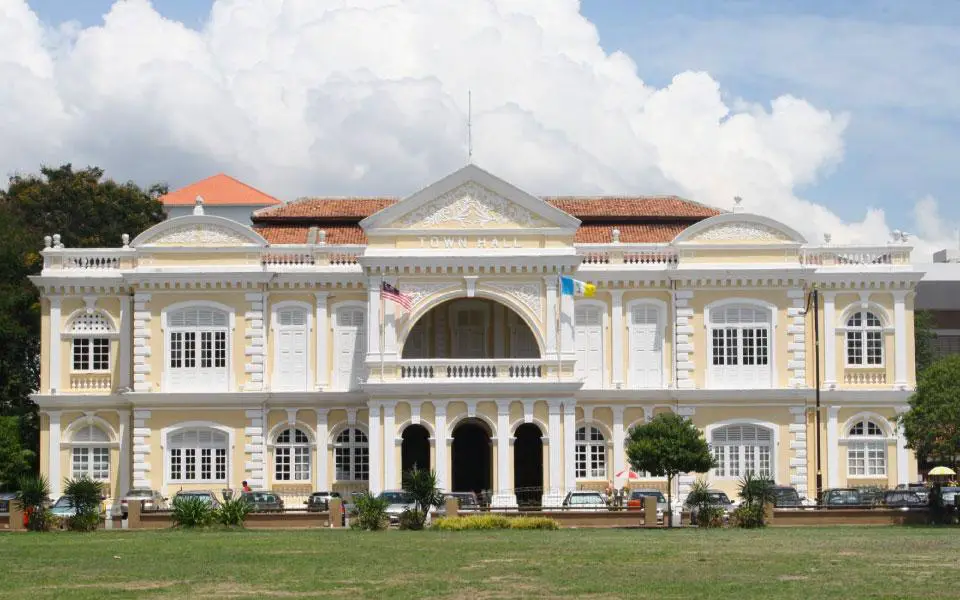

12:30pm – Lunchtime with Laksa
For lunch, it’s time to try the famous Penang style laksa and Char Kway Teow. There are countless places in the city to have penang style laksa and there’s no better place to try it than the famous Air Itam Laksa next to the Kek Lok Si Temple. This stall has been around for generations and attracts big queues of locals and tourists alike to their stalls every weekend.

Assam Laksa is the laksa to try in Penang which is characterized by its sour and tangy broth filled with exotic veggies, chunks of fish, rice noodle, and chilis. I actaully prefer the asam laksa style to the curry laksa which is more prevalent in Singapore.

2:00pm – Kek Lok Si Temple
Perched atop a hill in Penang, Malaysia, the Kek Lok Si Temple, or “Temple of Supreme Bliss,” is a testament to the island’s rich cultural tapestry and religious diversity. This colossal Buddhist temple, among Southeast Asia’s largest, harmoniously blends architectural elements from Chinese, Thai, and Burmese traditions.
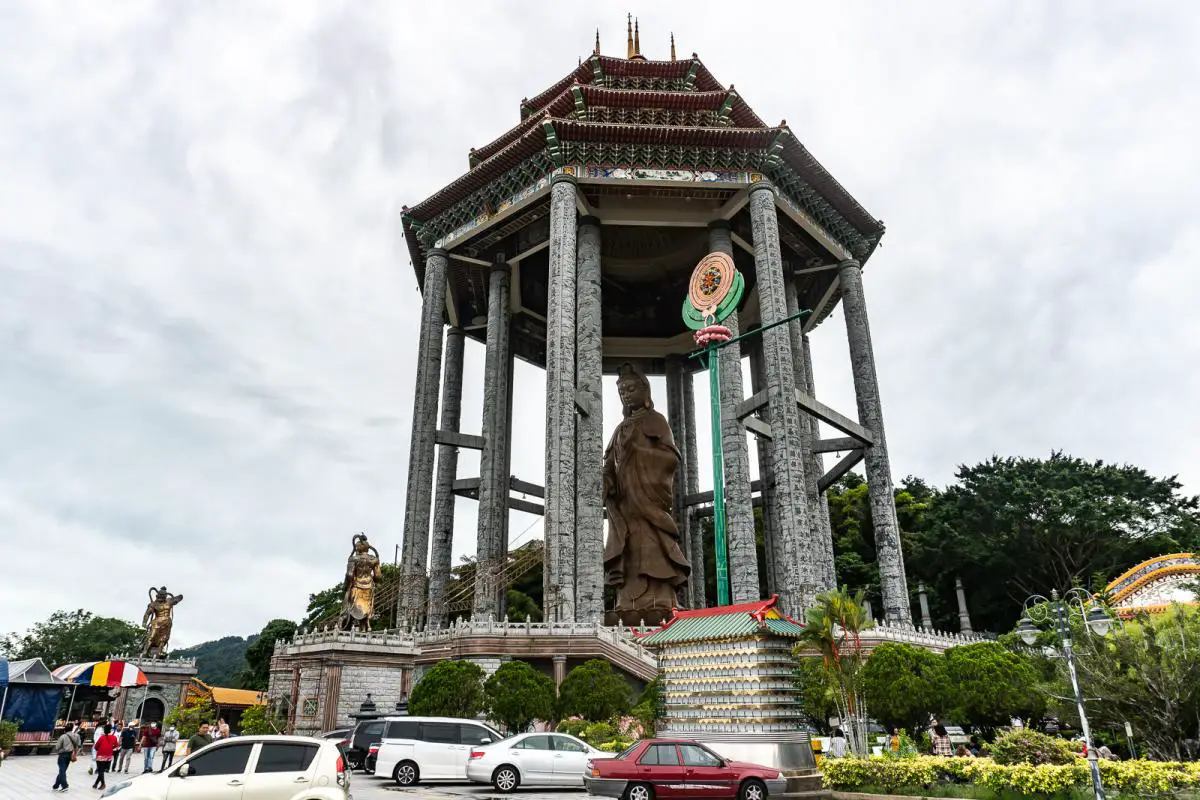
At its heart stands the Ban Po Thar, a towering seven-tiered pagoda adorned with intricate carvings, statues, and vibrant tiles, representing the facets of Buddhist teachings. This pagoda epitomizes spiritual devotion and architectural splendor.
Ascending further, visitors encounter a colossal bronze statue of Guanyin, the Goddess of Mercy, radiating compassion and hope. Surrounded by smaller statues and pavilions, it creates an atmosphere of serenity and reflection.
The temple’s unique features include the Tortoise Liberation Pond, where devotees release tortoises as an act of compassion, and the Thousand Buddhas Pavilion, housing countless small Buddha statues for meditation and introspection.
When visiting, dressing modestly is a sign of respect, and comfortable footwear is recommended due to the numerous steps. Don’t forget your camera to capture the breathtaking views of Penang from the hilltop.
Kek Lok Si Temple transcends its role as a place of worship; it is a cultural treasure that unravels Penang’s heritage and the unwavering devotion of its people. Whether you seek architectural wonders, spiritual solace, or cultural exploration, this spiritual marvel leaves an indelible mark on your heart and soul, symbolizing unity in diversity and the enduring power of faith.
4:00pm – Midday Chendol Dessert
When in Penang, you must try the famous Perenakan dessert called Chendol. From the temple, you can grab back to the famous Chendol spot.
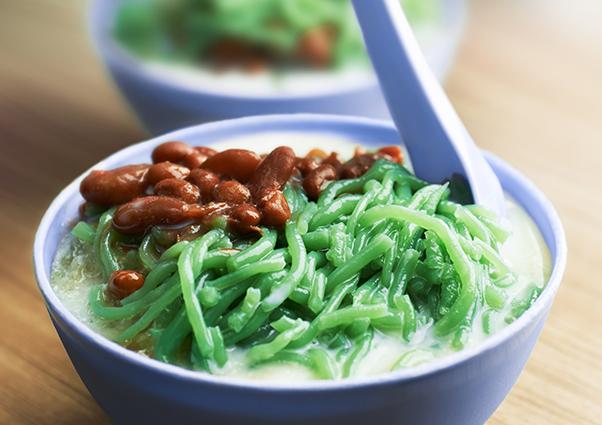
At its core, a typical serving of chendol consists of several key ingredients:
- Green Pandan Worm-Like Jelly: The distinguishing feature of chendol is the green, pandan leaf extract-infused jelly. This jelly, which resembles worm-like strands, carries a unique aroma and a subtle sweetness. Its texture is slightly chewy, contributing to the dessert’s overall appeal.
- Coconut Milk: Chendol is traditionally presented in a bowl or glass generously filled with creamy coconut milk. The coconut milk brings a rich and creamy element to the dessert, perfectly complementing the sweetness of the other components.
- Gula Melaka (Palm Sugar) Syrup: To sweeten chendol, Gula Melaka, also known as palm sugar, is employed. It’s typically melted into a syrup, imparting a distinctive caramel-like flavor to the dessert. This syrup is generously drizzled over the coconut milk and jelly, adding to the overall sweetness.
- Crushed Ice: Crushed or shaved ice is an essential element of chendol, serving to keep the dessert cool and refreshing. As the ice melts gradually, it creates a pleasing contrast between its chilliness and the creaminess of the coconut milk.
While some variations of chendol may incorporate additional ingredients such as red beans, sweet corn, or glutinous rice, these four core components—pandan jelly, coconut milk, palm sugar syrup, and crushed ice—remain constant. The harmonious blend of flavors and textures in chendol makes it a cherished dessert across the region, offering a delightful mix of sweetness, creaminess, and refreshing coolness, especially appreciated in the sweltering tropical weather.
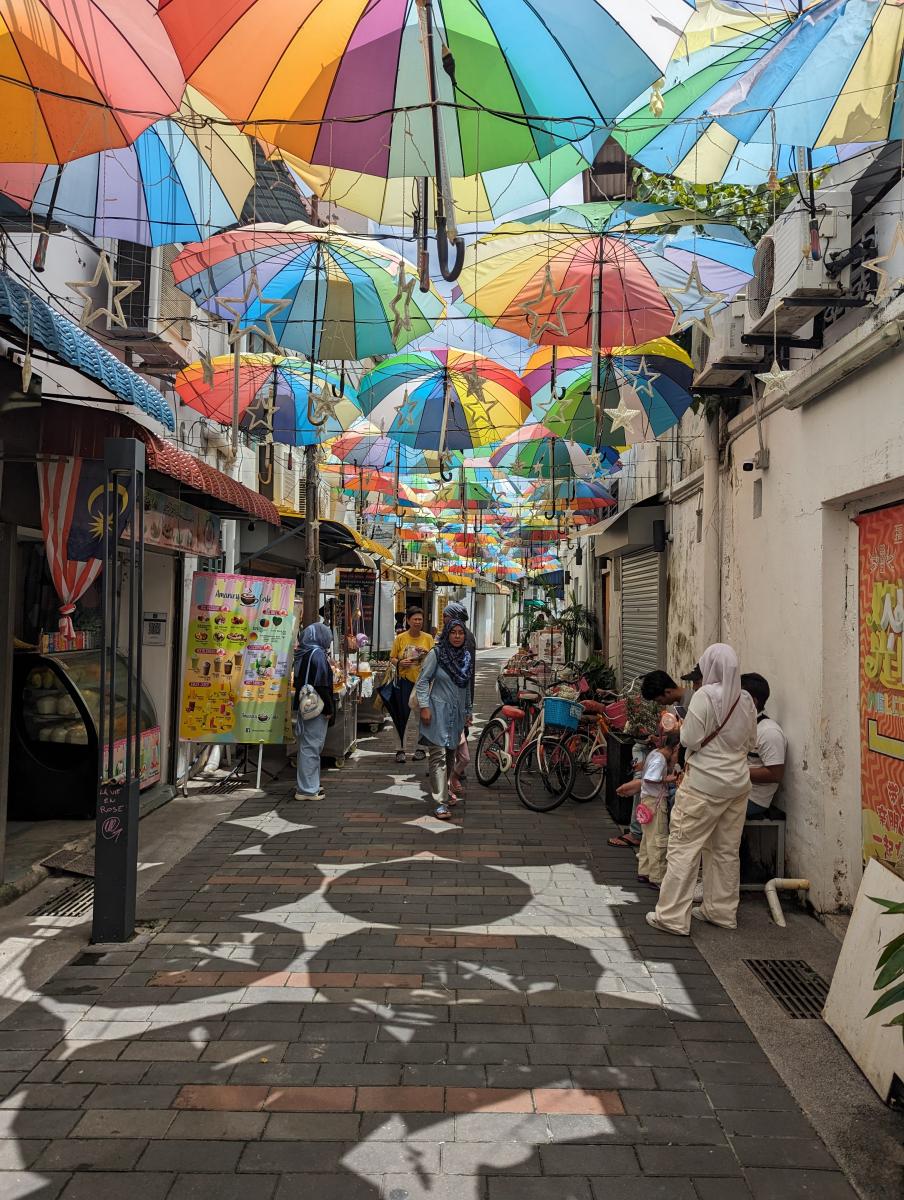
While Chendol doesn’t look appealing at first glance (what are those strange green things??), I can assure you it is actually very tasty and well worth the visit.
Dinner – Auntie Gaik Lean’s Pernakan food
Perenakan food is a must try when visiting this part of SE Asia. Perenakan is a term to define the people that are mixed Chinese and Malay ethnicity. This community was a significant part of the history of this region during colonial times. The food that came out of this arrangement is as delicious as it is unique.
Auntie Gaik, the heart and soul of the restaurant, is often seen greeting guests with a friendly smile. Her passion for Peranakan cooking is evident in every dish that comes out of her kitchen. As you sit down, you can’t help but feel like you’re about to embark on a culinary journey with a loving family member.
The Peranakan Feast: A Symphony of Flavors
The menu at Auntie Gaik’s is a delightful tapestry of Peranakan flavors, showcasing the unique fusion of Malay and Chinese culinary traditions. Each dish is carefully prepared with fresh ingredients and a genuine love for the craft.

- Nyonya Laksa: One of Auntie Gaik’s signature dishes, the Nyonya Laksa is a bowl of comfort that encapsulates the essence of Peranakan cuisine. The creamy coconut broth is infused with aromatic herbs and spices, creating a harmonious blend of flavors. Topped with prawns, tofu puffs, and shredded chicken, it’s a dish that embodies the complexity of Peranakan cuisine.
- Assam Pedas: Another must-try is the Assam Pedas, a tangy and spicy fish stew. The tamarind-based broth is a symphony of flavors, with hints of lemongrass, galangal, and chili. It’s a dish that tingles the taste buds and leaves you craving for more.
- Ayam Pongteh: For those who prefer a milder flavor profile, Auntie Gaik’s Ayam Pongteh is a delectable choice. This slow-cooked chicken stew features earthy flavors of fermented soybean paste and is often enjoyed with steamed rice.
- Kueh Pie Tee: Don’t forget to start your meal with Kueh Pie Tee, delicate and crispy pastry cups filled with a fragrant mixture of julienned vegetables and prawns. They make for a delightful appetizer that’s both crunchy and flavorful.
Day 3: Half day in Penang
For the last and final day of this two day weekend itinerary, start the day off with breakfast at one of the many beautiful cafes in the city. Of course, the cafes here can’t compare to the cafe culture of Bali but they are definitely up there with the best of them. Penang could be a great place for digital nomads looking for small city life. Once you’ve had your morning coffee, it’s time to eat the famous Roti Canai
9:00am: Roti Canai at Gemas Road Brothers
Roti Canai is one of Malyasia’s most popular dishes. Influenced by the Indian population that live in Malaysia, Roti Canai is a perfect crispy and chewy roti bread served with various forms of curry. The best place in Penang to have it is by far the Gemas Road Brothers on the outskirts of the town. It’s located in the middle of nowhere but people know how great it is and flock to this location.
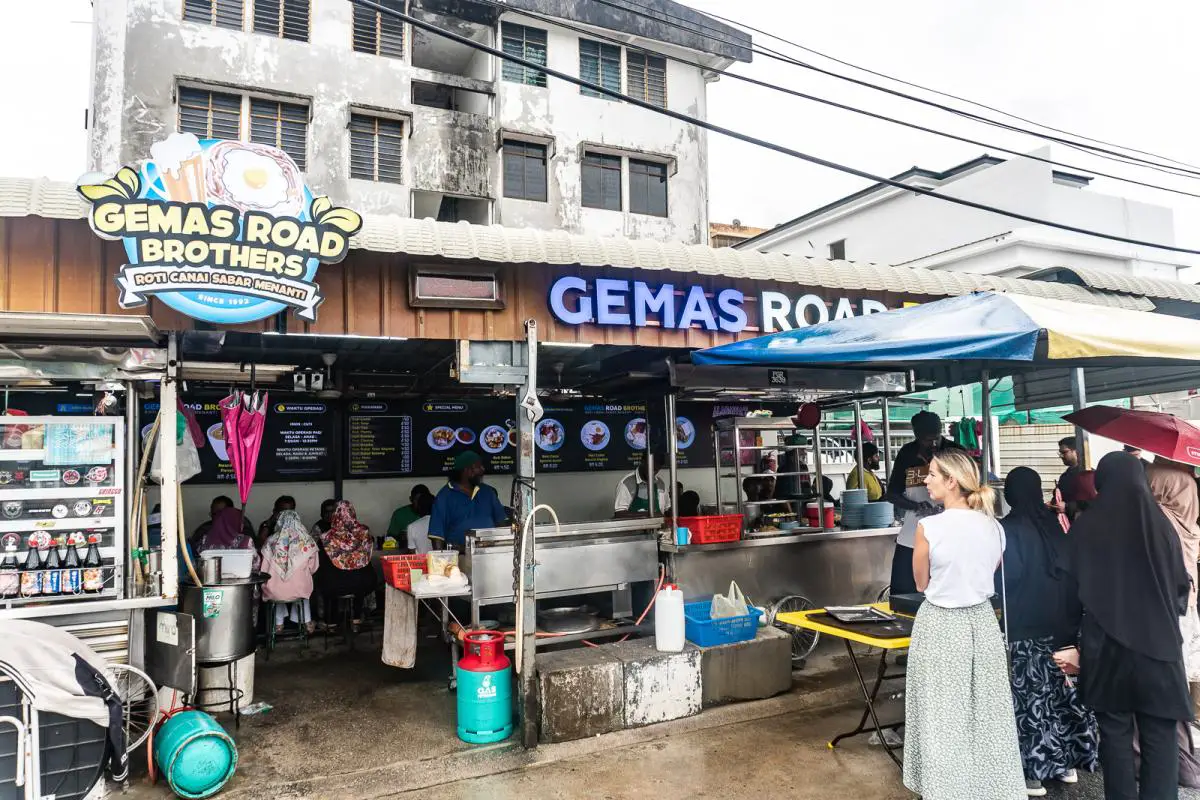
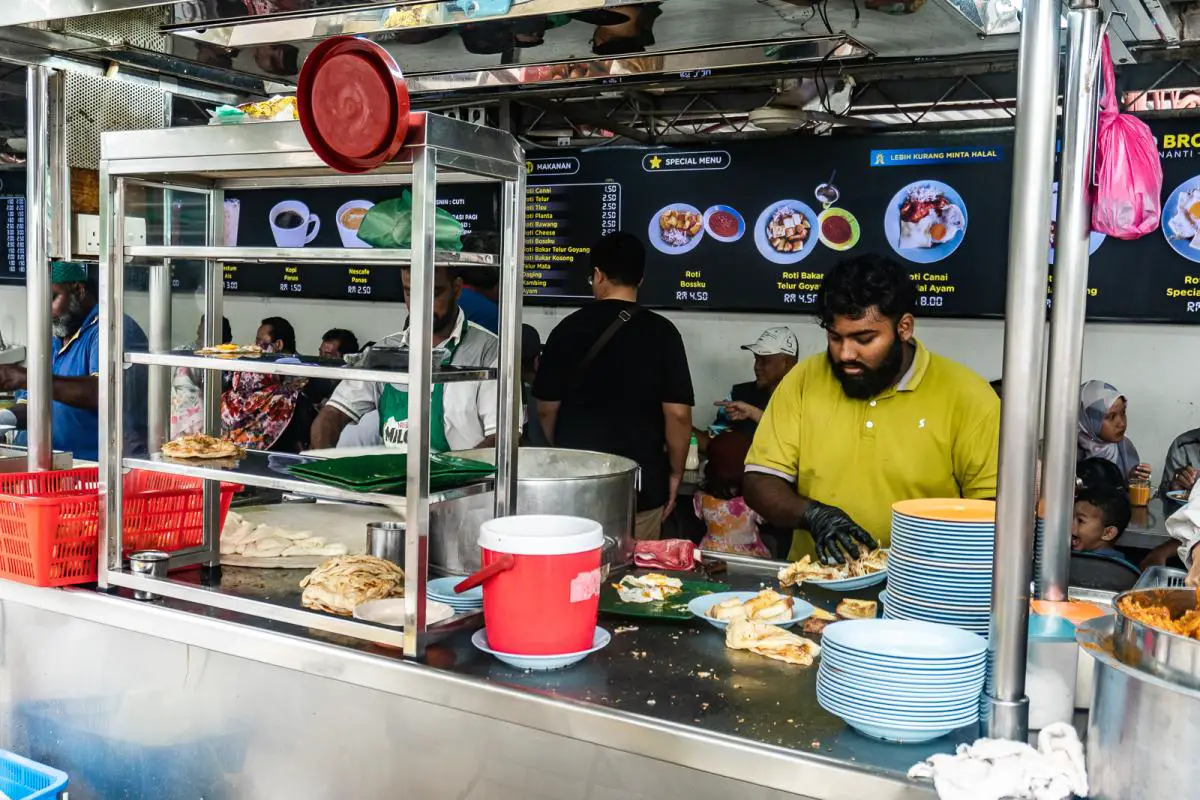
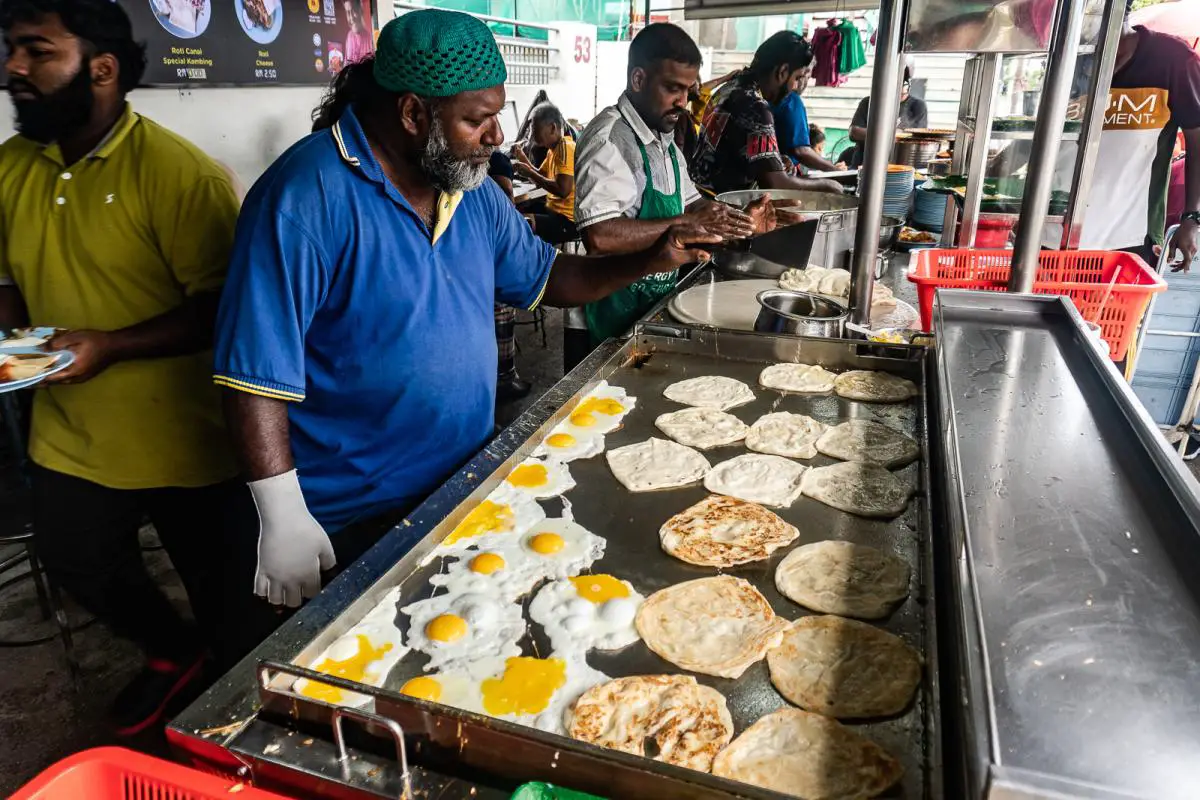
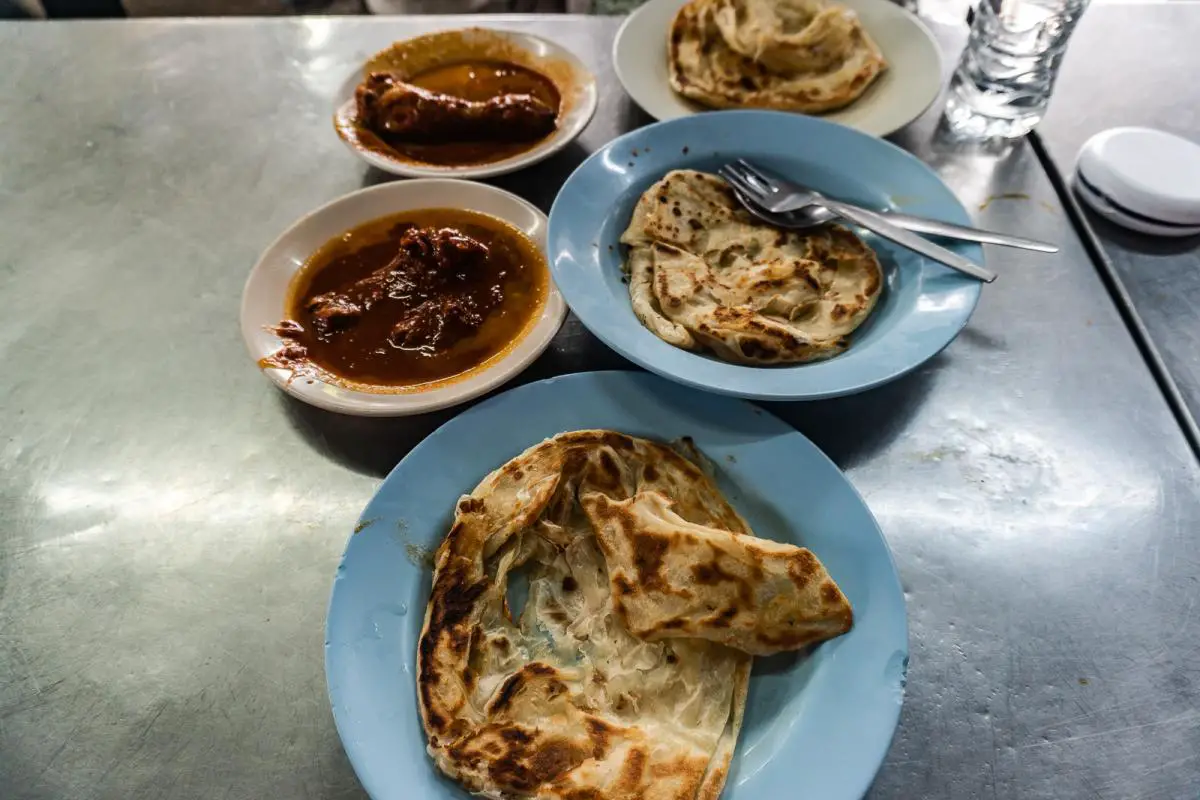
The roti is always made fresh and the curries are exploding with flavor. I got two rotis for myself as they were just so delicious.
12pm: Char Kway Teow
Finally, it’s time to eat more food in Penang. Char Kway Teow is on the menu as it is one of the famous Chinese-Malaysian dishes that you must try. Char Kway Teow is wide rice noodles stir fried with bean sprouts, crispy pork bits, seafood, and dark soy sauce. The best ones are cooked over a charcoal wok which imbues the smoky wok flavor to the dish.
The best place to eat Char kway Teow in Penang is definitely the Siam Road Charcoal CHar Kuey Teow road side restaurant.
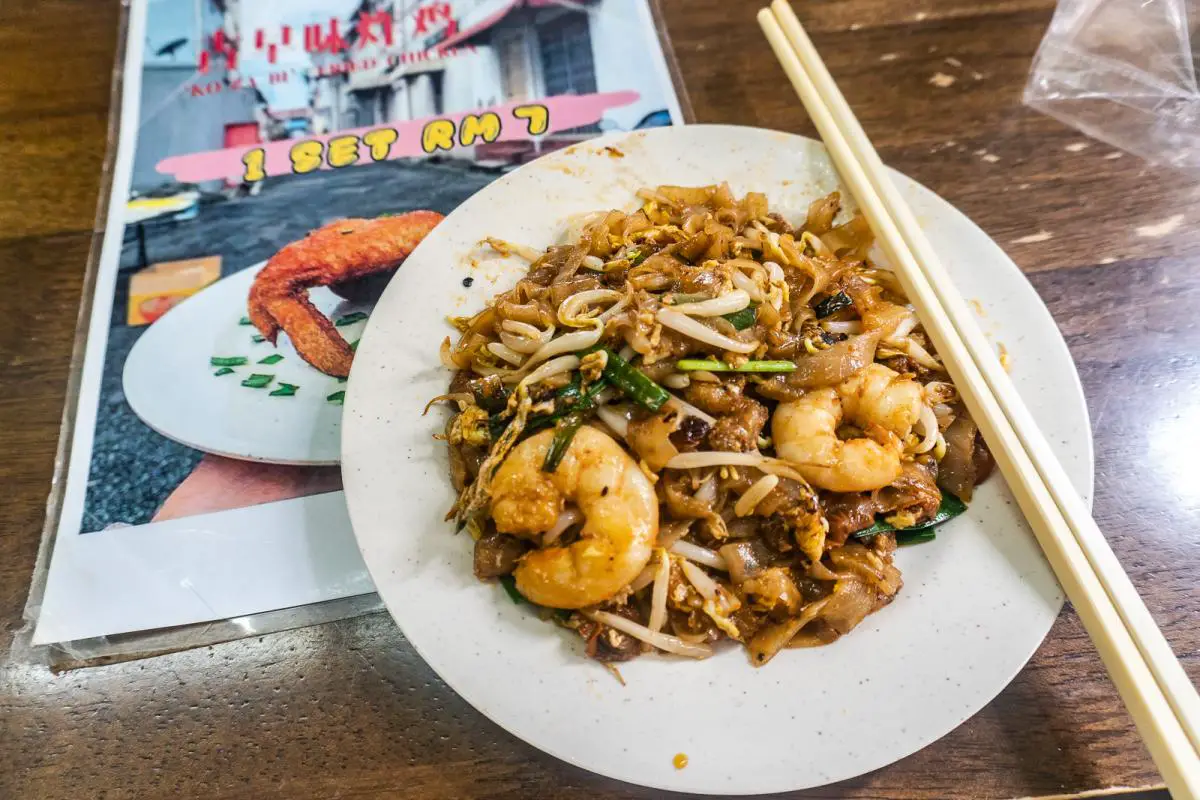

Best time of year to visit Penang
The best time to visit Penang, Malaysia, largely depends on your preferences for weather and the type of activities you’d like to engage in. Penang experiences a tropical rainforest climate, which means warm and humid weather throughout the year. Here’s a breakdown of the seasons to help you decide when to visit:
- December to February (Cool and Dry Season):
- This is considered the peak tourist season.
- The weather is cooler and less humid during these months.
- Ideal for outdoor activities and sightseeing.
- Expect larger crowds and higher accommodation prices, especially around Christmas and New Year’s.
- March to April (Transitional Period):
- These months are still relatively dry and pleasant.
- A good time to visit if you want to avoid the peak tourist season but still enjoy favorable weather.
- May to November (Hot and Wet Season):
- This period experiences the highest rainfall and humidity levels, especially from June to August.
- May can be a transitional month with occasional rain.
- The upside is that you may find better deals on accommodation during these months.
- If you don’t mind occasional rain showers, you can still visit and enjoy Penang’s indoor attractions, cultural experiences, and culinary delights.
- September to October (Intermittent Rainfall):
- These months can be a good compromise between weather and affordability.
- While there might be occasional rain, it’s not as intense as the peak monsoon season.
- Penang Festival Seasons:
- Consider visiting during special festivals to experience Penang’s unique cultural celebrations. For example, Chinese New Year and Thaipusam are vibrant and colorful festivals celebrated with great fervor.



